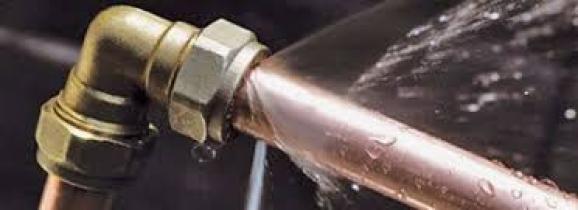Pinpoint A Half-Dozen of The Commonest Triggers for Leakage Within Your Home
Pinpoint A Half-Dozen of The Commonest Triggers for Leakage Within Your Home
Blog Article
They are making a number of great pointers about How to Find Water Leaks as a whole in this post just below.

Leaks not just trigger waste of water but can also trigger unneeded damages to your residence and promote unwanted organic growth. By looking and also recognizing for day-to-day scenarios that create leakages, you can protect your home from future leakages and also unneeded damage.
Intruding roots
Many water leaks start outside your house as opposed to inside it. If you observe an unexpected decrease in water stress, state in your tap, take time to head out and analyze your backyard. You might see damp spots or sinkholes in your yard, which could imply that tree roots are invading water lines causing water to permeate out. You can have your plumber look for intrusion, specifically if you have trees or shrubs near your residential or commercial property.
Corroded water supply
As time goes by, your plumbing system ages and also deterioration such as corrosion may start eating away the pipes. This could be the source of staining or warping on your pipes. This calls for an inspection with your plumber immediately. If our plumbing system is old, take into consideration replacing the pipelines because they go to a higher danger of corrosion than the newer versions.
Faulty Pipe Joints
Pipeline joints can degrade over time, resulting in water leaks. If you have noisy pipes that make ticking or banging sounds, particularly when the hot water is turned on, your pipeline joints are most likely under a lot of stress.
Instantaneous temperature level changes.
Severe temperature level adjustments in our pipes can cause them to increase as well as contract all of a sudden. This growth and also tightening might cause cracks in the pipes, specifically if the temperature are listed below cold.
Poor Water Connectors
At times, a leakage can be caused by loosened tubes and pipes that provide your home appliances. Generally, changing is what triggers the loose water Connections. You might locate when it comes to a cleaning device, a pipe might spring a leakage because of trembling throughout the spin cycle. In case of a water links leak, you might discover water running directly from the supply line or puddles around your devices.
Clogged Drains
Obstructed drains pipes could be aggravating as well as inconveniencing, however they can in some cases wind up creating an overflow resulting in burst pipes. Maintain eliminating any type of materials that may decrease your drains pipes that might clog them to stay clear of such troubles.
All the above are causes of leakages but not all water leaks arise from plumbing leaks; some leakages might come from roof covering leakages. All leaks must be repaired instantly to stay clear of water damage.
Leakages not just create waste of water but can additionally cause unnecessary damage to your home as well as promote unwanted natural growth. By looking as well as recognizing for daily circumstances that trigger leaks, you can secure your residence from future leakages as well as unneeded damage. Today, we will certainly look at six leak creates that may be creating your pipes to drip.
At times, a leak can be created by loosened hose pipes as well as pipes that supply your appliances. In instance of a water links leakage, you might see water running directly from the supply line or puddles around your home appliances.
How To Check For Water Leak In Your Home
How To Check for Leaks
The average household's leaks can account for nearly 10,000 gallons of water wasted every year and ten percent of homes have leaks that waste 90 gallons or more per day. Common types of leaks found in the home are worn toilet flappers, dripping faucets, and other leaking valves. These types of leaks are often easy to fix, requiring only a few tools and hardware that can pay for themselves in water savings. Fixing easily corrected household water leaks can save homeowners about 10 percent on their water bills.
To check for leaks in your home, you first need to determine whether you're wasting water and then identify the source of the leak. Here are some tips for finding leaks:
Take a look at your water usage during a colder month, such as January or February. If a family of four exceeds 12,000 gallons per month, there are serious leaks.
Check your water meter before and after a two-hour period when no water is being used. If the meter changes at all, you probably have a leak.
Identify toilet leaks by placing a drop of food coloring in the toilet tank. If any color shows up in the bowl after 10 minutes, you have a leak. (Be sure to flush immediately after the experiment to avoid staining the tank.)
Examine faucet gaskets and pipe fittings for any water on the outside of the pipe to check for surface leaks.
Undetected water leaks can happen without the home or business owner even realizing. If you suspect a water leak, but not able to find the source. It is time to contact a professional water leak detection service, The Leak Doctor.
How To Find a Water Leak In Your Home
https://www.leakdoctor.com/blog/How-To-Check-For-Water-Leak-In-Your-Home_AE197.html

As a devoted person who reads on How to Find Water Leaks, I was thinking sharing that excerpt was appropriate. Do you know about someone else who is sincerely interested in How to Find Water Leaks? Do not hesitate to share it. We thank you for reading our article about Common Water Leaks In House.
Address plumbing urgencies. Report this page